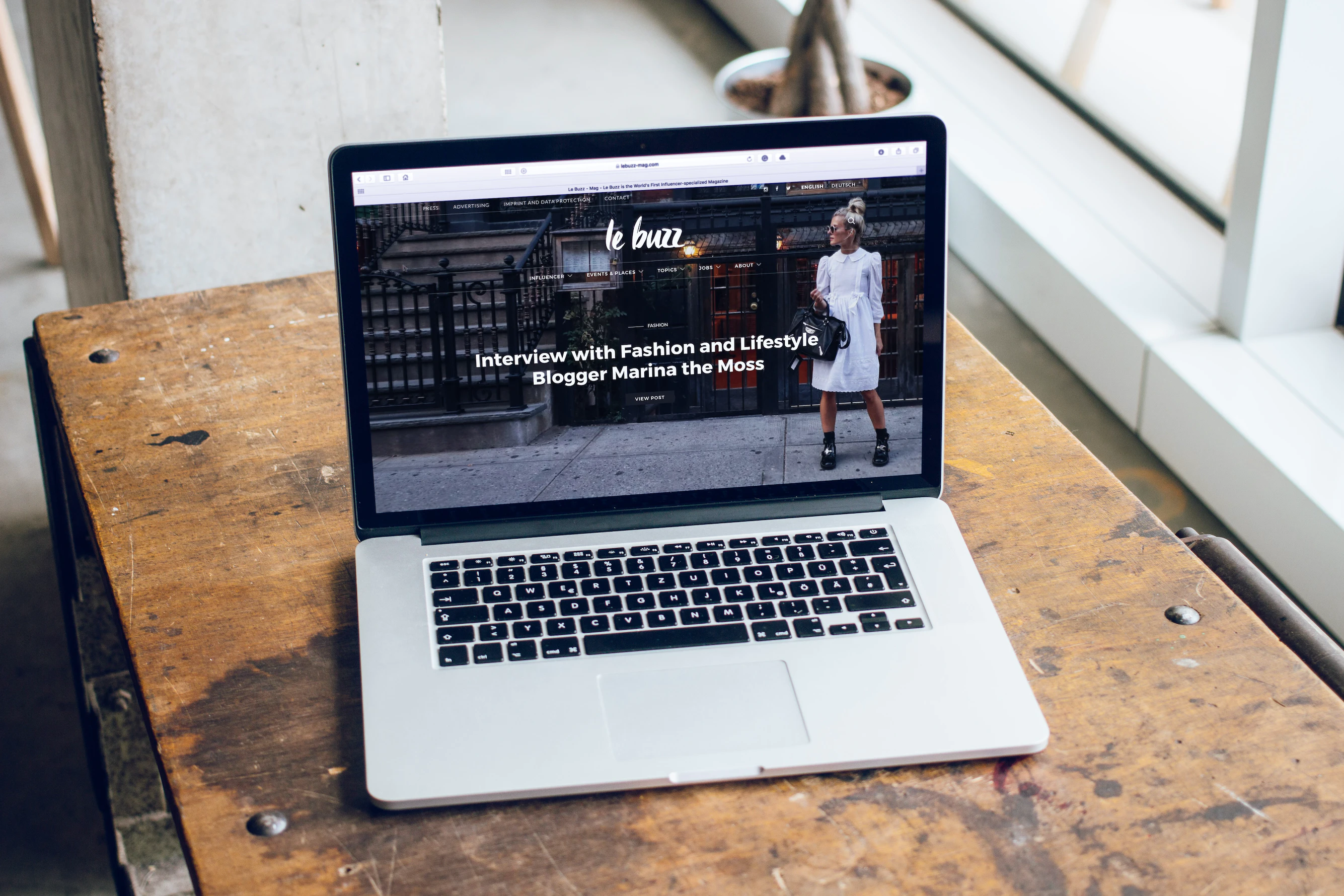
Web designers are in high demand these days, and it’s no surprise why. The way that online browsing has changed over time means there is more of an emphasis on design than ever before.
Web design portfolios allow you to demonstrate your expertise so potential clients know exactly where their money could go if given a choice between several candidates; giving them peace of mind while saving time spent figuring everything out themselves
If you’re a web designer, then you know that having a portfolio is essential. A web design portfolio showcases your expertise and demonstrates what you can do for prospective clients. It’s the best way to show off your work and attract new customers. In this blog post, we will discuss what a web design portfolio is and why you need one. We’ll also provide tips on how to build an effective portfolio that will help you stand out from the competition!
What is a web design portfolio?
A web design portfolio is a collection of your best work that you can show to potential clients. It’s an important marketing tool that can help you attract new business and win more design bids. Your portfolio should demonstrate your skills, highlight your experience, and demonstrate what you can do for your customers.
A well-crafted portfolio can be the difference between landing a job or losing out to another candidate. Therefore, it is important for web designers to put thought and care into creating their portfolios. When choosing which websites to include, designers should select those that best demonstrate their range of design abilities.
In addition, it is also helpful to include information about the design process, such as wireframes and mockups. By taking the time to build a portfolio that highlights their strengths, web designers can increase their chances of landing their dream job.

Why do I need a web design portfolio?
Having a web design portfolio is one of the most important things you can do to market yourself as an online creative. It’s how people are going to see what kind of work you have and whether or not they want it for themselves! A good-looking website with some great content on it will always win more customers than just promoting yourself through social media alone, so make sure your website looks great from all angles.
As a web designer, your portfolio is one of the most important marketing tools you have. It’s the best way to show off your work and demonstrate what you can do for potential clients. A strong portfolio can help you win more projects and attract new business.
If you’re just starting out, then it’s especially important to have a portfolio. It can be difficult to get your first few customers without a portfolio of your work to show them. A well-designed portfolio will help you stand out from the competition and make a good impression on potential clients.
Creating an effective web design portfolio takes time and effort, but it’s worth it. A well-designed portfolio can help you stand out from the competition and attract new clients.

How to build a web design portfolio that stands out?
Coming up with a web design portfolio that stands out can be a challenge. You want to show off your best work, but you also don’t want to overwhelm potential employers or clients. The key is to find a balance between the two.
Start by choosing your best work. This doesn’t necessarily mean your most recent work, but the projects that you’re most proud of. Once you’ve selected your portfolio pieces, take some time to write a brief description of each one. What were the project goals? How did you go about achieving them? What technologies did you use?
Next, add a personal touch to your portfolio. A good way to do this is to include a short bio and headshot on your About page. This will help potential employers or clients get to know you a bit better and give them a sense of your personality.
Finally, make sure your portfolio is easy to navigate. Employers and clients should be able to find the information they’re looking for quickly and easily. If your portfolio is confusing or difficult to use, they’ll likely move on to someone else’s.
Tips for creating a web design portfolio that will get you noticed:
Start with your strongest work. Your portfolio should showcase the best and most recent examples of your work. Make a good impression on employers or clients who are looking at it as an indicator of how talented you really can be.
Use visuals to your advantage. Employers and clients will be looking at your portfolio as a way to gauge your design skills. Make sure your work is well-designed and easy on the eyes.
Keep it relevant. only include work that is relevant to the web design industry. If you have other types of design experience, you can create separate portfolios for those.
Don’t be afraid to show off your personality. A web design portfolio is a great way to show potential employers or clients who you are as a person. Use it to tell your story and let your personality shine through.
Keep it updated. Make sure to regularly update your web design portfolio with your latest and greatest work. This will show that you’re always learning and growing as a designer.
Here are some tips for creating an effective web design portfolio:
- Use high-quality images that showcase your work in the best light possible
- Include a mix of projects, both small and large, to demonstrate your range of abilities
- Write compelling descriptions of your projects that highlight your achievements
- Organize your portfolio in a way that is easy for potential clients to navigate
- Make sure your contact information is prominently displayed
A web design portfolio is an essential tool for any web designer. It helps you attract new clients and showcase your best work. By following the tips above, you can create an effective portfolio that will help you stand out from the competition!

What are the different types of web design portfolios you can create?
There are many different types of web design portfolios that you can create. The most important thing is to choose a portfolio that showcases your work in the best light possible and makes it easy for potential clients or employers to see your skills and expertise.
Some common types of web design portfolios include:
- A simple single-page portfolio that highlights your key skills and projects
- A multi-page website portfolio that includes an About page, case studies, and contact information
- An online portfolio built using a platform like WordPress or Squarespace
- A PDF portfolio that can be emailed or downloaded from your website
- A printed portfolio that you can take with you to meetings or interviews
- A video portfolio that showcases your work in a creative and engaging way
- An interactive portfolio that lets visitors explore your work in depth.
The most important thing is to choose a portfolio that makes it easy for potential clients or employers to see your skills and expertise. Choose a format that you are comfortable with and that will showcase your work in the best light possible.

Web design portfolio examples: how do you present them?
There are many to display your portfolio. Some common examples include landing pages, case studies, and galleries – each with its own unique benefits.
Landing pages are a great way to showcase your work and get future prospects or employers interested in what you do. They typically feature a portfolio section, as well as some information about your skills and experience.
Case studies are another great way to showcase your work, but they also provide potential clients or employers with a more in-depth look at your process and how you approach projects. By detailing a specific project you worked on, readers can get a sense of your process and the results you’re able to achieve.
Galleries are a great way to show off your portfolio in a visually-appealing way. They can be used to show off both individual projects and your overall body of work.
No matter which type of portfolio website you choose, o create, make sure it is professional, engaging, and highlights your skills and experience. Remember to keep your audience in mind. Make sure the design and content are both appealing and relevant to those who will be viewing it.
How to keep your portfolio up-to-date?
Your web design portfolio is your calling card, and it should be up-to-date and showcase your best work. Here are some tips on how to keep it looking its best.
Make sure you have a good selection of projects to show off. A well-rounded portfolio will demonstrate your range as a web designer, and highlight the different skills you bring to the table.
If you’re just starting out, it’s okay to include personal projects or designs that were created for fun. These can be a great way to show off your creativity and give potential employers an insight into your design process.
As you gain more experience, start to focus on showcasing your professional work. Be sure to include any relevant details about the project, such as the client’s brief, your role in the project, and the final outcome.
It’s also important to keep your portfolio up-to-date with your latest work. Regularly adding new projects will show that you’re keeping up with the latest web design trends and technologies.
Finally, don’t forget to promote your portfolio! Share it with friends, family, and colleagues, and be sure to post it on your social media channels. By getting your work in front of as many people as possible, you’re more likely to attract the attention of potential employers.

What to include in your portfolio website?
Your portfolio is an essential tool when searching for clients because it demonstrates your abilities, experience, and creativity to those who may hire you. Oftentimes, it can be the make-it-or-break-it element in getting a job.
When putting together your web design portfolio, there are a few key things to keep in mind.
First, make sure to choose a selection of websites that showcase your range as a designer. Include both personal and professional projects, and if possible, highlight projects that received recognition or awards.
Next, be sure to include a case study for each project. Your case study should explain the problem that you were solving, the process that you went through, and the final result. By including a case study, you will be able to show off your analytical and problem-solving skills as well as your design chops.
Third, pay attention to your colour scheme. The colours you use on your website should be complementary to your portfolio pieces and help create a cohesive overall look.
Finally, don’t forget the case study! For each project you include in your portfolio, write up a brief case study explaining your thought process and approach.
Finally, be sure to write compelling case studies for each of the projects featured in your portfolio. This is a great way to give prospective clients insight into how you work and think, and it can be extremely helpful in landing a job or project.
Make sure to proofread your case studies carefully and check for typos before publishing your website. With a well-designed and thoughtfully put-together portfolio, you’ll be sure to impress clients-to-be and land the job or project you’re after.

How to market your portfolio online?
When it comes to marketing your web design portfolio, the sky is the limit. There are several ways to get your work in front of potential clients, and the best way to do so is through a combination of online and offline marketing efforts.
For starters, consider creating a landing page for your design agency. This will be the first point of contact for many prospective clients, so make sure it is well-designed and informative. Include a portfolio section showcasing your best work, as well as information about your services and rates.
In addition to your landing page, you should also make sure your website design portfolio is easily accessible from your main website. Make it easy for visitors to find and browse through your work. Additionally, be sure to list your design services on directories and job boards. This will help prospective clients find you when they are searching for someone with your skillset.
Finally, don’t forget about offline marketing efforts. Attend design events and meetups, and network with other professionals in your field. You never know who might need your services – or who might be able to refer you to a potential client. By getting your name out there, you’ll be well on your way to landing your dream design projects.
Keep in mind that promoting your web design portfolio is an ongoing task. The more effort you put into promoting your work, the better your chances of landing new clients. So get out there and start spreading the word about your business today!

Do I need to include testimonials on my portfolio website?
When having a portfolio website, one important element to consider is whether or not to include testimonials from past customers. While testimonials can help give future customers an idea of your work, they are not essential. Ultimately, the decision of whether or not to include testimonials on your portfolio website is up to you.
If you’re not sure whether or not to include testimonials in your portfolio, here are a few things to consider:
- Testimonials can add credibility to your design work
- They can show that you’re able to meet deadlines and produce high-quality work
- They can give an overview of your processes and how you work with clients
If you decide to include testimonials in your portfolio, make sure to choose ones that are relevant to your work as a web designer or developer. For example, if you specialize in designing eCommerce websites, it would make sense to include a testimonial from a satisfied client who purchased an online product from your site.
The bottom line is that there’s no right or wrong answer when it comes to including testimonials in your portfolio. Ultimately, the decision comes down to what you think will showcase your work in the best light and help you land the jobs or clients you’re after.

